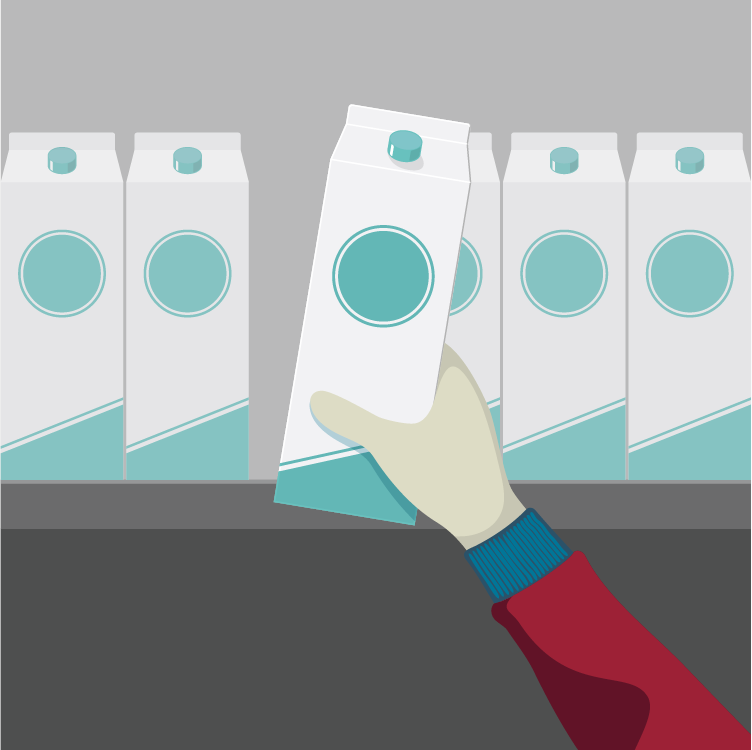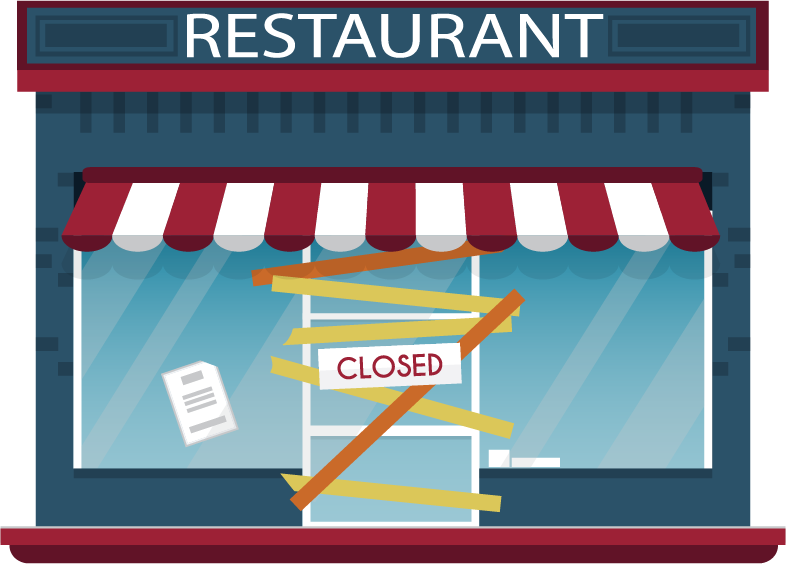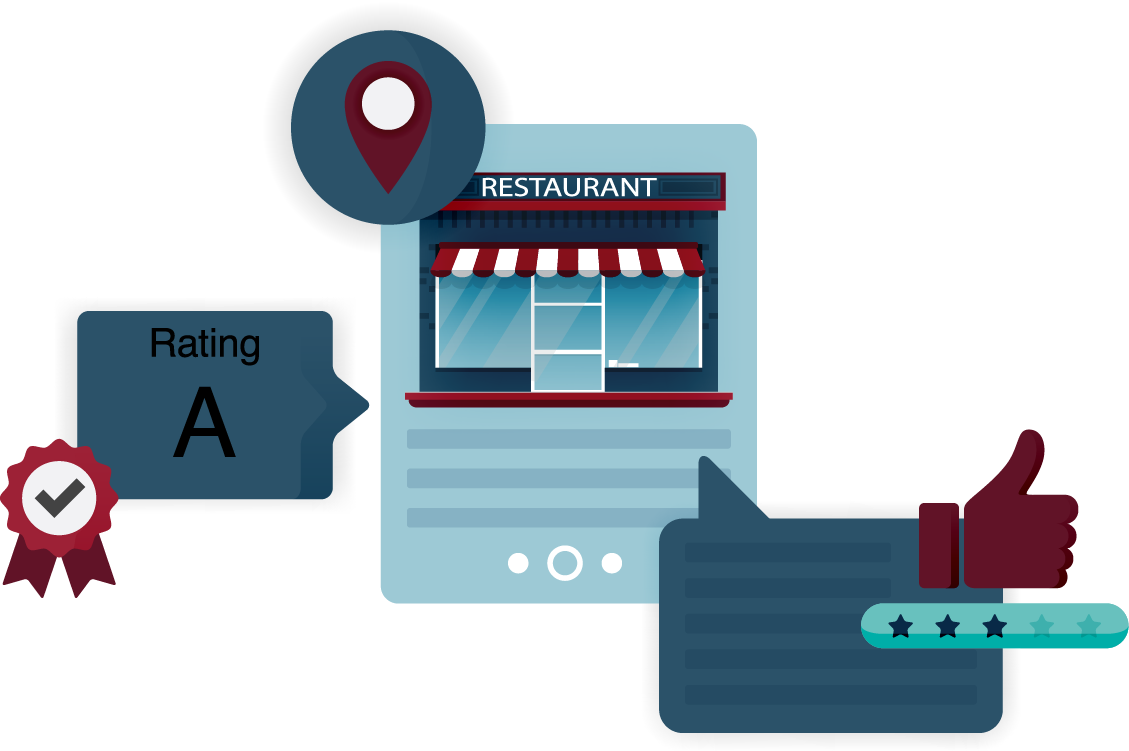Why Sell By Dates Matter More Than You Think

January 24, 2020 | By Jeff L. Wright
Researchers: Jason W. Miller, Brian S. Fugate, Susan L. Golicic
Have you ever opened the cooler case and reached in to purchase a gallon of milk only to stop as soon as you saw that it only had one more day of shelf life? Of course you have. After all, who wants to pay full price for milk that only has a day of shelf life left?
Although it is just a date and string of other numbers, a “Sell By” date matters to grocery shoppers and affects their purchasing decisions. Those “Sell By” dates that are so common in grocery stores are an example of an Information Disclosure Program (IDP). These programs disclose information to the public or to regulatory agencies. These disclosures usually result in either changes being made by the company or maintenance of current standards. For example, something as simple as “Sell By” dates pressure the company to get milk to the store faster and stay fresh as long as possible.

Many industries, including dairies, face regulatory pressures from health departments, interstate trafficking agencies or workplace safety agencies. Other pressures may come from the public or employees in the form of lawsuits or unions. What causes these pressures, who is involved, and what effects this has on productions costs were the focal points of research conducted by Jason W. Miller, Brian S. Fugate, and Susan L. Golicic. They examined "How Organizations Respond to Information Disclosure" in their 2017 article in the Academy of Management Journal.
What Kinds of Information Disclosures Are There?
Some IDPs are known as informative IDPs. Informative IDPs are primarily marketing “bragging rights” – the national rankings of a university or how well your product faired in a series of tests. The researchers note that they are solely focused on what is called a normative IDP, one that “normalizes” or regulates an industry. The marketing potential of normative IDPs may be less about accomplishments and more along the lines of addressing shortcomings within an organization. Agencies such as a health department or the Environmental Protection Agency are also part of normative IDPs that may be necessary for public safety, and IDPs such as this were the focal point of the research.

Take a restaurant chain as an example, which is a metered industry. A metered industry means one subject to oversight and enforcement through a regulatory agency such as a health department. In some areas a health inspection “grade” is posted in the windows of these establishments whereas other areas have public records or post reports. These information disclosures may take the form of an official report, but they may also be the result of a news story. The number of news stories about product recalls or E. coli contamination in romaine lettuce would be examples of the latter.
How Effective Are Information Disclosure Programs?
The writers’ research demonstrated that a tapering effect began after a certain amount of time had passed. Initially, companies can expect certain focus areas to improve after the implementation of an IDP. Over time, however, the efforts or successes will begin to taper. Prior performances, public opinion and policies being handed down by legislators in regard to regulated industries affect this tapering phenomenon. The form that information disclosures take and the prevalence of their implementation and accessibility by various audiences also affect tapering.

An Information Disclosure Program also includes what practices or services are implemented after an information disclosure has been produced, what actions are taken and by who, and whether further enforcement is necessary. Research has shown that normative practices in both the food and health industry have led to improvements that directly affect overall public health. For example, letter grades posted in restaurant windows lead to better health inspection scores in those areas. Also, news reports and official disclosures have forced poorly performing hospitals to alter their practices or implement new ones.

However, an issue may arise after a period of time in which the improvements or even maintenance of current conditions may begin to decline or even regress. This is the aspect known as tapering that the researchers found evidence of occurring in/with most IDPs. The researchers note that novelty plays a major factor in people’s response to these IDPs. Whereas before we may have panicked in the grocery store aisles over an E. coli outbreak, now we just switch to a popular alternative. Nonetheless, after varying durations of time both the public and the companies basically lose interest or just become desensitized to it as the novelty wears off. When this happens, the improvements may begin to taper off.
Tapering also has positive aspects. It could be the positive result of a negative grade being issued, or a positive grade could be used for marketing purposes. It’s probably safe to assume most people would rather eat at the “A-rated” restaurants over the “Cs” and “Ds.” Tapering may also be a result of improvements being made, and therefore no further improvement is necessary. The researchers note that further improvements after the major focal point may be leading to more costly ventures than necessary or that stakeholders will require or stockholders will sign off on. For example, if your burger shack-styled restaurant cannot get higher than an “A” rating, would the next step then be to invest in improving the quality of the meat in the burger? Would this in turn raise your production costs, potentially costing customers more money and shifting you out of the shack-style and into the upscale-dining-style? Would all of this be worth it to your business model? Since you cannot score higher than an “A” rating on a health inspection, you might shift to maintaining those “A” standards, which exemplifies the more positive results of the tapering effect.
However, the researchers also point out that poorly performing companies often see tapering as a result of laxing regulation over time or because external pressures on the company wanes. A company might shift their resources away from the improvements once the news stories die down or they bank on not being inspected again for a while. Unfortunately, some companies taking advantage or exploiting this timeline may be one of the more negative aspects of tapering. Then again, it may just cost too much to maintain the “A” rating for long, or perhaps it may be cheaper in the long run to pay the fines and make smaller improvements.
Tapering may all boil down to whether the external powers that be, a government agency and/or customers, can pressure the organization. Larger companies may understandably face larger issues in terms of changes or improvements. Whether or not the company can weather some bad publicity or fines and costly regulations may depend on the overall size and financial capabilities of the company. While agencies who regulate certain industries may have the backing of the government, customers can also apply pressure in the form of boycotts and protests, and much of this may also be leveraged in both a digital and real-world landscape, potentially making it a multi-front struggle for the company involved.
Researching How Tapering Works
The researchers examined four hypotheses to determine how tapering works. Those hypotheses are:
- Hypothesis 1 – Tapering will occur after an initial IDP is rolled out and/or new services are implemented.
- Hypothesis 2 – Companies with poor initial performance will taper off faster.
- Hypothesis 3a – Larger companies will have less rapid improvement because large change may be harder for large companies.
- Hypothesis 3b – Larger companies will have less tapering over time.
The researchers used Federal Motor Carriers Safety Administration’s (FMCSA) records as one of their research subjects to test for these hypotheses. Following CSA scores, they tracked the motor carriers’ implementation of improvements over time.

Research demonstrated that hypotheses 1, 2 and 3a proved to be true. Following a low CSA score, companies’ safety records began to improve but tapered off over time. The poorer performers did tend to taper off faster, and larger companies had a slower rate of improvement. The motor carriers can implement changes and new requirements, and initially their drivers may adhere to these. Over time, however, drivers may regress back to their poor driving habits once they are not being closely monitored or because they become desensitized to the pressure. Again, though, this could also be because the improvements stick, and therefore there is less need for further improvement, or it may simply be too high of a cost to pursue the endeavor any further.
What did not prove out was hypothesis 3b. It turns out that the size of the company had little effect on tapering. Both large and small, better and poorer performers, all experienced tapering to one degree or another. Company size did not prove to be a factor. However, the researchers advised caution because the absence of data indicating something cannot be taken as absolute proof that the effect cannot or will not take place. You cannot prove a negative: Just because I have never been attacked by a bear while walking with my beagle does not mean my beagle scares bears, or anything else, away. So, we cannot assume that larger companies won’t have less tapering effect since there were a limited amount of the types of industries represented in this research.

How This Affects You as a Manager
If you are subject to normative Information Disclosure Programs, then you will likely be pressured to make improvements in certain instances. You can definitely plan that over time the amount of actual improvement that you will have to keep doing will taper off. Hopefully, this is due to the fact that your program has been successful, and you are shifting into maintaining those higher standards. Other organizations’ tapering, however, could be due to reduced pressures from either the public or regulatory agencies. These relaxations in both pressure and implementation of improvements wanes as the novelty and urgency of the situation wears off over time.
These pressures often come from multiple fronts, with customers, governmental agencies, and even lawyers representing angry consumers or citizens. Regulatory agencies use normative IDPs to maintain public health and safety standards for restaurants and interstate trucking. While there may be a lot of debate about those standards, the public benefits from these regulatory practices. The issue that arises for companies is that the IDP is like that carton of milk we buy at the grocery store. The novelty of an issue affects how long it stays in the limelight. Sometimes, just like milk, the issues and challenges your business or industry faces may have an expiration date.


